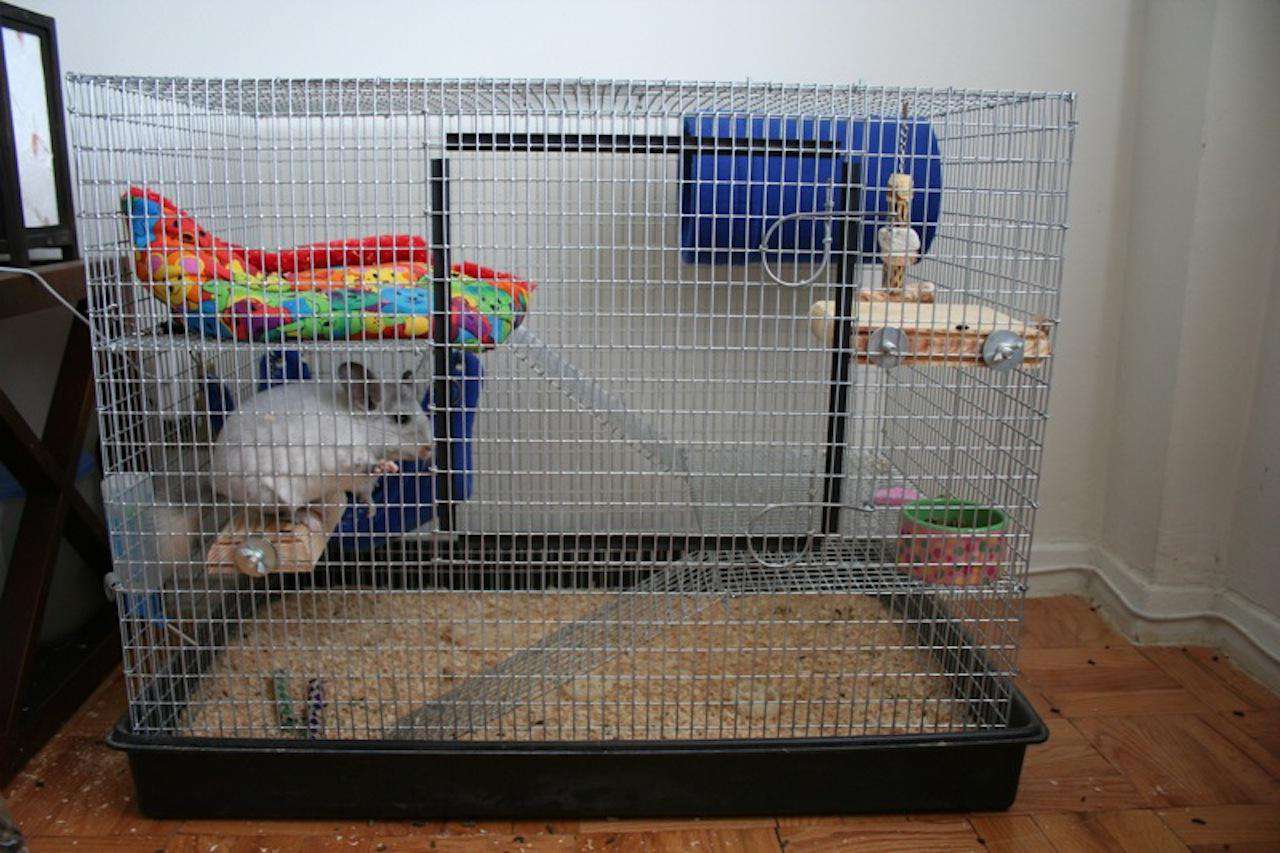When you adopt a chinchilla, the first thing you need is the space where it will spend most of its life: its cage. In this article we want to tell you what a chinchilla’s cage should be like so that it grows up happily and does not have any health problems caused by its habitat.
What Does a Chinchilla Need To Be Comfortable?
A chinchilla needs a spacious cage , with a door that can be easily opened and closed, and should be large enough for it to get in and out of, no matter how large it grows.
The cage must have a solid base and be constructed of bite-resistant materials , such as metal. Chinchillas bite everything they can, so it is important that the cage is not made of materials that can be broken or chewed. This is one of the first causes of intestinal diseases of chinchillas.
Chinchillas are very active animals and need a lot of space to play and exercise. A cage for your chinchilla is recommended to be at least 60 cm wide by 60 cm deep and 80 cm high. If the cage is bigger, the better.
Where Can We Place It?
The cage should be located in a quiet place, away from drafts and sources of heat. Chinchillas are animals that are very sensitive to heat and cold, so it is important to protect them from temperature fluctuations.
What Should Be Put Inside a Chinchilla’s Cage?
The cage should be equipped with a chinchilla feeder, drinker and litter box .
The feeder must be filled with feed for chinchillas , which can be purchased in specialized stores or on Amazon. Food should always be fresh and clean.
The drinker should be filled with fresh, clean water . Chinchilla drinkers are another source where stomach diseases can proliferate for your rodent.
Don’t forget the toys! Your rodent is going to spend a lot of time in that space, make it fun for them.
Types Of Chinchilla Cages
There are different types of chinchilla cages on the market, and each one has its own advantages and disadvantages. In this article we have gathered the best models of chinchilla cages and then we will explain the different types of chinchilla cages so that you can choose the one that best suits your needs.
Plastic Cages
They are the cheapest and serve as a temporary cage or for a very small chinchilla. They have become an excellent option for traveling with a chinchilla. However, its plastic bars, as well as the bottom, can be toxic to these rodents. They are not recommended in the long term.
Stainless Steel Cages
They are the most resistant, but also the heaviest. It prevents them from gnawing on the bars and they are the most hygienic and quick to clean. They are the most recommended.
Wooden Cages
They have become very fashionable because they return chinchillas to their natural habitat. Although chinchillas can gnaw on it, it is usually not toxic to them. You just have to be careful with the humidity that the wood picks up.
Ultimately, a chinchilla’s cage should be large enough for the chinchilla to move freely, and it should be made of materials that are non-toxic to the chinchilla.
It is also important that the cage has a door that can be closed tightly to prevent the chinchilla from escaping. And finally, the cage must have a few accessories so that the chinchilla can move, hide and play.
